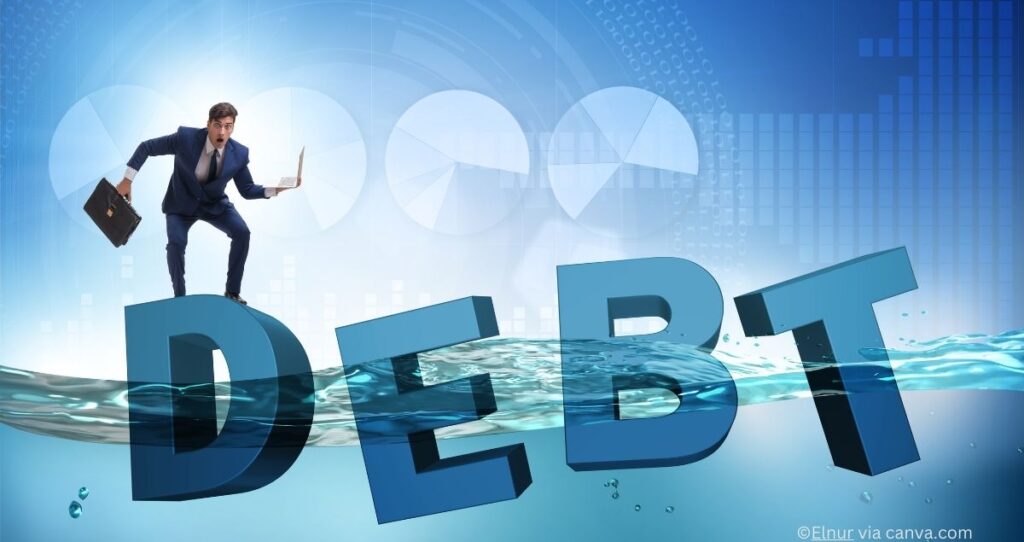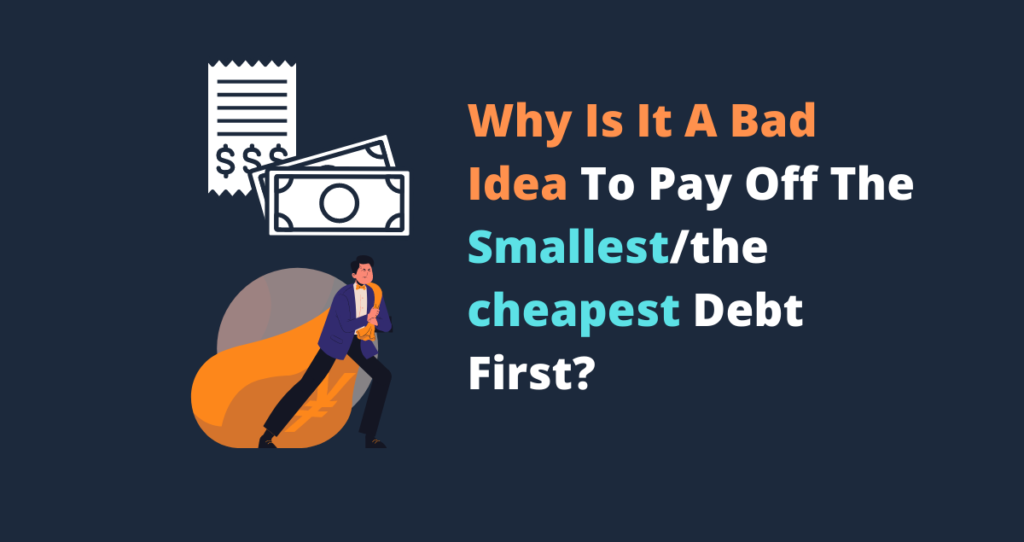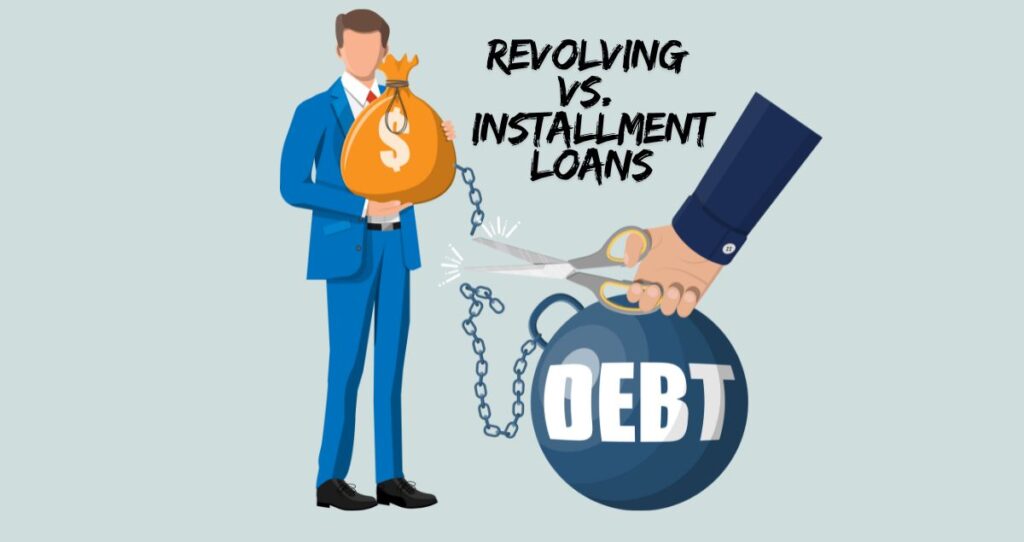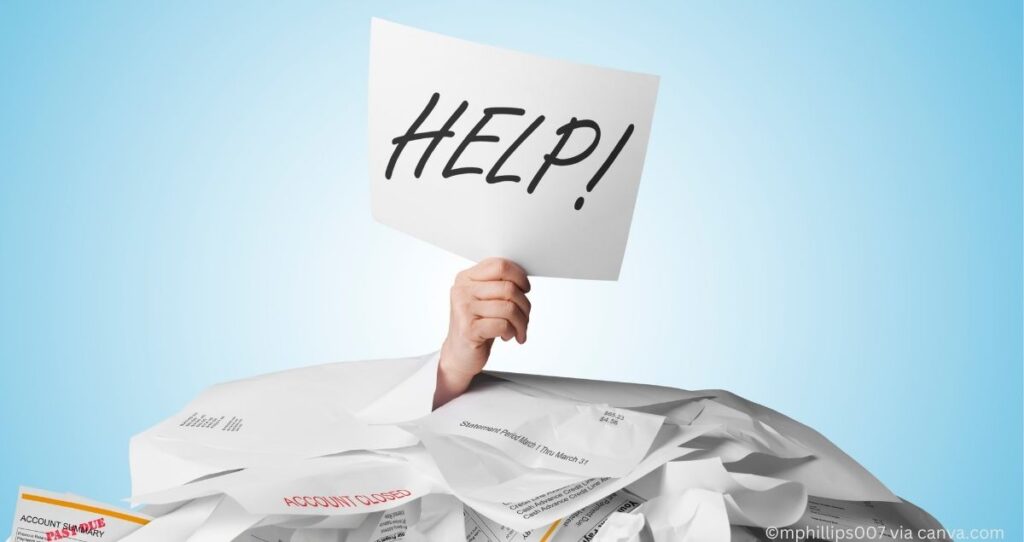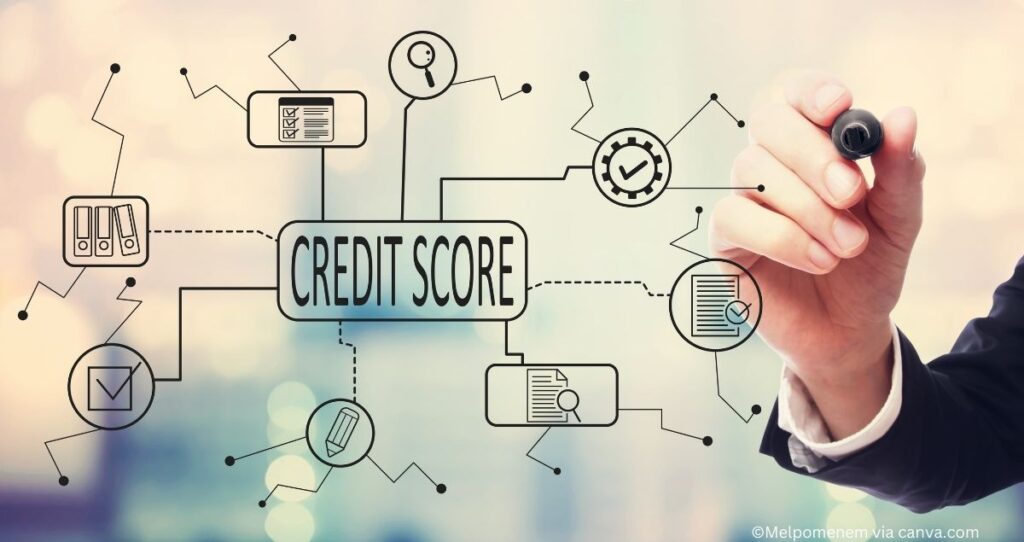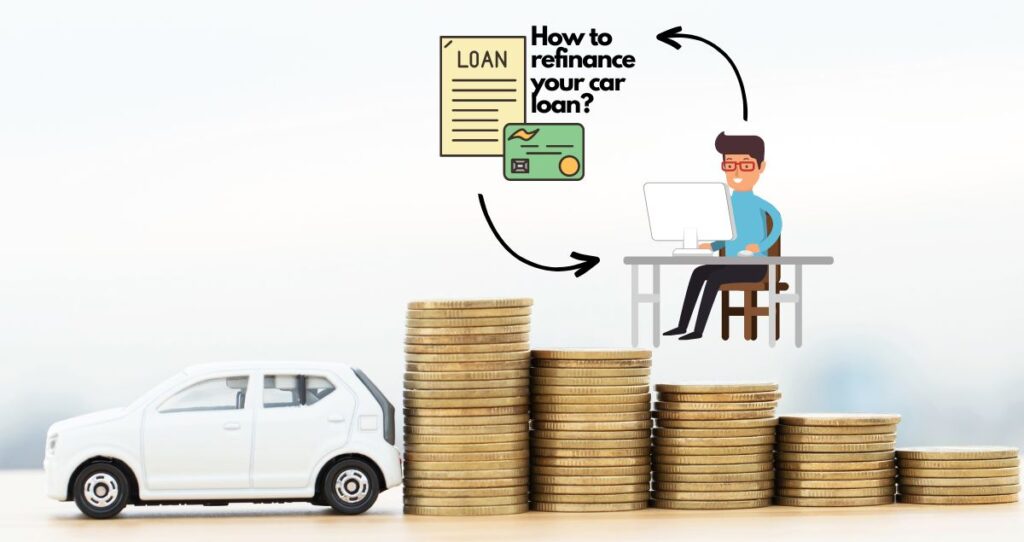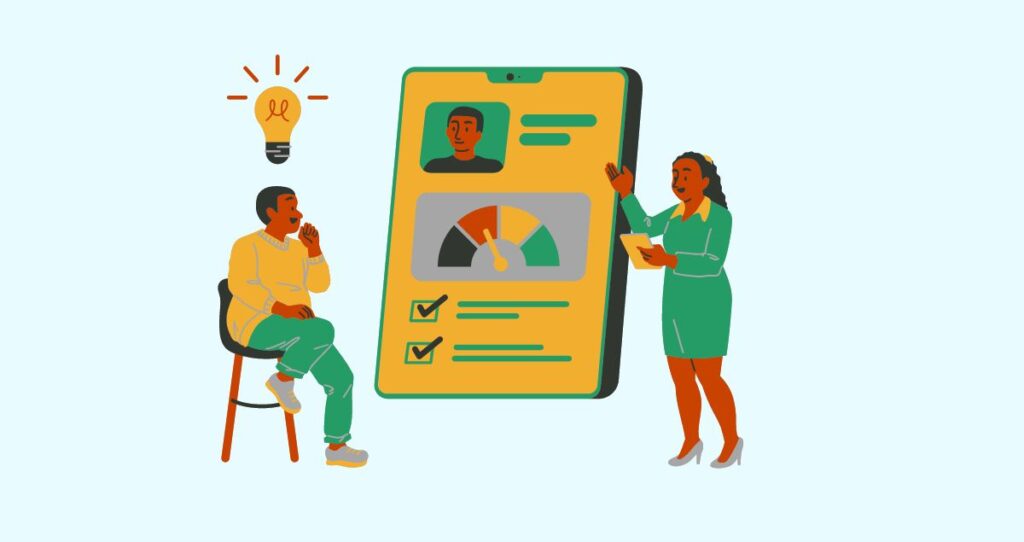“Borrowing money is not easy in a world where everything is flashy, and companies encourage consumers to borrow without thinking.” To reach financial independence, you must avoid bad debt and only take out loans when necessary. Millions struggle financially, not because they don’t make enough money but because they accumulate bad debt, which prevents them from saving money and investing in their futures. Unless you avoid bad debts, building financial resilience and becoming rich might be a dream that will never come true. In this post, I will walk you through the difference between good and bad debt and what debts to avoid if you want to achieve financial independence.
Debt and our emotional desires
The terms good debt and bad debt differ from person to person. We define debt based on our needs, and people often make emotional decisions. Unless you struggle financially due to debt, you might not recognize that you have taken out bad loans. Most people desire to look rich, so they borrow more than necessary to fulfill those emotional desires.
For example, some might think credit card debt is good because it allows them to buy whatever they want and carry their balances by paying the minimum payment. Does that mean credit card debt is good because some people think it is? The answer is no. Credit card debt is an excellent example of a bad debt to avoid. Judging a debt based on how well it aligns with our deep emotional desires leads to bad money decisions and long-term financial hardships.
Good debt allows you to achieve specific financial goals without causing extra stress on your financial situation and very often helps you make more money. On the other hand, bad debt does not benefit you and usually leads to short and long-term financial struggles.
You might also like the following posts.
- 7 reasons your family is so poor
- 22 clever ways to live cheaply without feeling poor
- 15 Things to stop buying and save money fast
What is a good debt?
Ideally, good debt helps you achieve your financial goals without affecting your ability to fulfill other financial obligations or reach future goals. Good debts are usually assessed based on how much you borrow and your financial gains from taking them. This is a vague definition, but to put this into context, you must first understand your money goals and how taking out that debt will impact them.
In summary, good debts help you buy assets, while bad debts help you buy liabilities.
What is an asset?
An asset is anything of monetary value that makes you money. A good debt helps you buy more assets, which enables you to make more money. For example, if you take out a loan to buy a rental property, this debt will be good simply because the rental property will make you money.
What is a liability?
A liability is anything of monetary value that takes money out of your pocket. Bad debts help you buy liabilities, which cost you more money. For example, taking out a loan to buy a boat is a terrible money decision because the boat does not make you money. You might think the boat is an asset, but it is a liability simply because its value goes lower through depreciation and does not make you any money. For this reason, your boat is a liability.
Let’s see more examples comparing good debts vs. bad debts.
For example, just because you can afford a down payment on a new car does not make a car loan a good debt. Also, wanting something so bad does not justify the need to take out a loan. I consider a car loan a bad debt simply because the car loses its value over time and does not give you financial gains. If you take out a car loan and lease the vehicle for more than it costs you, the loan would be considered good debt.
Student loans also fall into the same category because most college graduates never find jobs in their fields after graduation, leading to further financial stress. But if you are in medical school and need $30k to finish your last semester, a student loan might be a good debt in this case. This is because the amount you will borrow is not too much, and the loan will come with a lot of financial gains since your income after graduation will be high.
In summary, a good debt has the following properties.
- The loan comes with reasonable interest.
- It helps you achieve many financial gains, such as a return on investment.
- The debt does not prevent you from achieving your goals
- It is easy to qualify for, and the terms are favorable.
- The loan should not result in failing to achieve some of your financial goals. For example, you should not reduce your retirement savings rates because you are paying off the loan.
What is a bad debt?
A bad debt is any debt you take out to buy liabilities. Even if the debt helps you buy the things you want, it is still bad if it does not give you financial gains or help you make more money. For example, most people consider car loans good debts, whereas, in reality, car loans are bad when it comes to financial independence and building wealth.
Yes, you will pay off the car over time and think you are building equity, but the car does not make you money. This is because, on top of paying higher interest rates, gas, maintenance, and insurance, the car’s value goes to zero over time. In other words, the car costs you money, making it a liability. For this reason, taking out a car loan is not a good financial decision.
The best way to buy a car is usually to save up for it and only buy used cars with cash. For example, instead of using $10,000 as a downpayment on a $50,000 car, you can use that money to purchase a used $10,000 car. This prevents you from taking out unnecessary loans or paying interest. It also saves you money as the vehicle has experienced the first 5 years of high depreciation. Additionally, you pay less for insurance and maintenance.
You might also like effective tips to avoid credit card debt.
Here are tips to spot bad debts
When taking out loans, you must evaluate whether the debt is good or bad. How do you know if you are taking out a bad loan? Here are key points to consider before taking out a loan.
- The loan comes with a higher interest.
- Bad debts are usually smaller and easy to qualify for. Think of payday loans with over 35% interest.
- The loan helps you buy things that cost you more money. That means you are using the loan to buy liabilities such as a car, a loan mower, a boat, a lake cabin, etc.
- The terms of the loan are unfavorable.
- The loan is not helping you achieve anything financially. Think of accumulating too much credit card debt because of excessive spending.
- It prevents you from achieving other financial goals.
- You are better off without the loan or buying the item. Think of taking out student loans to get a college degree in music, where the chances of getting a job after graduation are slim.
How does good debt differ from bad debt?
Borrowing money is not easy in a world where everything is flashy, and companies encourage consumers to consume without thinking. Before you get trapped in unimaginable debt and trade your future for bread, here are tips for recognizing good debt vs. bad debt.
- Good debt helps you buy assets, whereas bad debts help you buy liabilities. This is like buying a fancy car for joy vs. renting a car.
- Good debt gives you financial gains, whereas bad debt costs you money. Think about buying a beautiful single-family home vs. purchasing a rental property or getting a quick loan to finish a law school where your income will be high vs. getting a student loan for music where you might not even get a job. You can also compare a business loan with a credit card debt. With a business loan, you achieve business goals, develop new products, and increase sales. For the credit card debt, on the other hand, you buy clothes, food, and fancy electronics, which give you zero financial gains, and you end up paying more than 22% APR.
- Good debt comes with lower interest rates, whereas bad debt usually comes with higher rates. Consider how much interest you pay on a business loan vs. credit card debt or a payday loan APR or payday loan APR, which is considered one of the highest in the world.
- Bad debts come with unfavorable terms, while good debt comes with good terms.
- Bad debt prevents you from achieving other financial goals, while good debt brings more money into your pockets, allowing you to reach even more goals.
Examples of good debts
Like I said earlier, the term good debt is subjective. To spot good debt vs. bad debt, you must evaluate the true cost of taking out the loan and how being in debt will impact your financial goals. Ideally, a good debt allows you to buy assets, whereas a bad debt helps you buy liabilities.
Here are examples of good debt.
1. Mortgage
Taking out a mortgage could be a good financial decision, depending on your circumstances. Typically, buying a house allows you to build equity in the property and benefit through appreciation. You might also get tax credits from the government. Taking out a mortgage, however, is an excellent financial decision only if the house costs you less than what you pay for rent. A mortgage will not be a good debt if buying a home will cost you more than you currently pay for rent.
Related mortgage tips
2. Refinance loan
Refinancing your debt to a lower-interest loan will be a good idea if you currently pay higher interest on a loan or have unfavorable terms. In this case, the refinance loan is a good debt because it saves you money in interest charges, allowing you to pay off your debt faster.
3. Business loan/debt
As a business owner, sometimes you must raise capital through private investments or take out a business loan to expand, develop a new product, or meet payroll obligations.
4. Zero-interest loan
What makes debt bad is the interest you pay on the loan and the obligation to repay it. The loan will be good if you find a zero-interest loan for an important goal leading to substantial financial gains, such as purchasing a rental property.
5. Certain student loans
While I don’t advocate for student loans, there are times when taking out a student loan might be a good idea. For example, federal student loans are much cheaper than private loans. But that does not mean federal student loans are good. We still need to evaluate what degree you are going for, how much you are borrowing, and potential financial gains from that loan after graduation. If you take out a student loan to finish a high-paying degree with a job in sight, the loan might be considered a good loan.
Examples of bad debt
If you are struggling with debt, you have likely taken out a bad loan. Here is a list of bad debts to avoid in order to build wealth and reach financial independence.
1. Credit card debts
Credit card debt is one of the worst debts you can have, as it comes with higher interest that is compounded daily. Additionally, credit card issuers allow consumers to pay the minimum payment and carry most of their balances, contributing to higher debt balances. Furthermore, consumers accumulate credit card debts for no reason other than shopping, which does not benefit them financially. A simple $10,000 credit card can take up to 10 to 20 years if you only pay the minimum payment. That is how bad credit card debts are.
2. Personal loans
You are probably wondering why I listed personal loans among bad debts. To justify whether a loan is good or bad, we must evaluate its purpose and the financial gains from taking it out. Most consumers take out $30k or $50k in personal loans to renovate their kitchens because they dislike the layout. Others go into debt to paint the entire house, replace doors and windows, and redo the newly installed flooring because they don’t like the material used by previous owners.
Taking out a loan to complete such a project is like throwing money away.
The point here is that personal loans can be good or bad depending on what you use the money for. If you get a personal loan to do such projects, you are wasting your money, as there are no financial gains from such a loan unless the loan increases the home value. But if you take out a personal loan to renovate a rental property, such a loan could be good.
Related personal loan tips:
3. Personal lines of credit
Similarly to credit cards, personal lines of credit, such as home equity lines of credit(HELOCs), are also not good. While these loans might come with a much lower interest than credit card APRs, they can still lead to debt accumulation, and you don’t benefit financially from spending money on things you don’t need.
4. Car loans
Car loans are controversial due to mixed emotions about them. Almost every person you meet who has taken out a car loan will tell you it was an excellent financial decision. However, if we look at these debts financially, car loans are bad, primarily when used to purchase new vehicles. New vehicles have a depreciation rate of up to 50% to 60% in the first 5 years and come with higher interest rates.
Additionally, you must have full coverage when you purchase a car with a loan. Maintaining newer cars also costs a lot of money, which adds to the cost of having the car. For these reasons, cars are liabilities, so taking out a loan to finance a car purchase is a bad financial decision.
5. Higher interest loans
Any debt with high interest is automatically bad, no matter why you borrow money. Good examples of high-interest loans to avoid include but are not limited to car title loans and payday loans. These are short-term loans, but they come with APRs as high as 35%, making them some of the worst debts in the lending industry.
6. Loan for leisure activities
Indeed, your financial needs are not the same as mine. But regardless of the situation, there are times when taking out a loan does not make financial sense. Borrowing money for leisure activities such as travel, vacation, parties, etc., is terrible. No one in their right mind should borrow money for such activities.
How to pay off bad debt fast?
Carrying bad debt is one thing. Paying it off is another. Bad debts are bad because they negatively impact your finances and often take longer to pay off due to higher interest if you don’t act. If you are looking for easy tips to pay off bad debts, check out the following debt management strategies.
How to get out of credit card debt fast?
Know all your debts
Knowing all your debts and how they affect your financial situation is the first step in paying off bad debts. This process usually involves creating a list of all your debts and their respective interest rates. Any debt with a higher interest rate should always be paid first to prevent your debt from growing. These debts could include payday loans, credit card debts, personal loans, and title loans.
Get financial support
You might not know how to approach your debts and which debt payment strategies to use. You can still seek professional support to help you organize your debts and establish a debt management strategy to pay them off. Each state and the local city has certified debt counseling agencies and organizations that can help you establish a debt management plan. These organizations can also help you negotiate with your lender or find financial assistance to help you pay off your debts.
You might like to know which debt you should pay off first.
Use the right debt payment strategy.
Once you have determined your debts and how each debt affects your financial situation, it is time to pay off all your bad debts. There are many debt payment strategies, and your method of paying off bad debts depends on what works for you. The most effective approach is the debt avalanche method, where you first eliminate your debts, starting with the highest-interest debt.
If you live on a low income, using the debt snowball method could also be a good debt payment strategy. The debt snowball method strategy lets you pay off your debts by starting with the smallest balance. Since bad debts usually have lower balances, the lowest debt could also have the highest interest. This could allow you to use the debt snowball and debt avalanche methods simultaneously. For example, a $1,000 payday loan might be the smallest debt and the highest interest. Paying off such a loan will help you eliminate your debts faster.
You might also try refinancing your debts to take advantage of lower interest rates. Lower rates mean your monthly payments will be lower, allowing you to pay off your debts and save money. You could also consolidate your debts or do a balance transfer in case of many credit card debts.
Save money to increase your monthly debt payments.
Increasing our monthly payments is the biggest secret to getting out of bad debt faster. If you don’t have enough cash to allocate to your debts, lowering expenses will help you save money and increase your monthly debt payment.
Analyze your income and expenses to understand your current spending and saving goals. Then, you start cutting unnecessary purchases and focusing on needs rather than wants. A simple lifestyle helps you save money and teaches you to value what you have. Canceling some of your streaming services, avoiding eating out daily and impulse purchases, and lowering your utility bills are some of the best ways to lower your expenses. You can use your savings as extra cash to pay off your debts.
